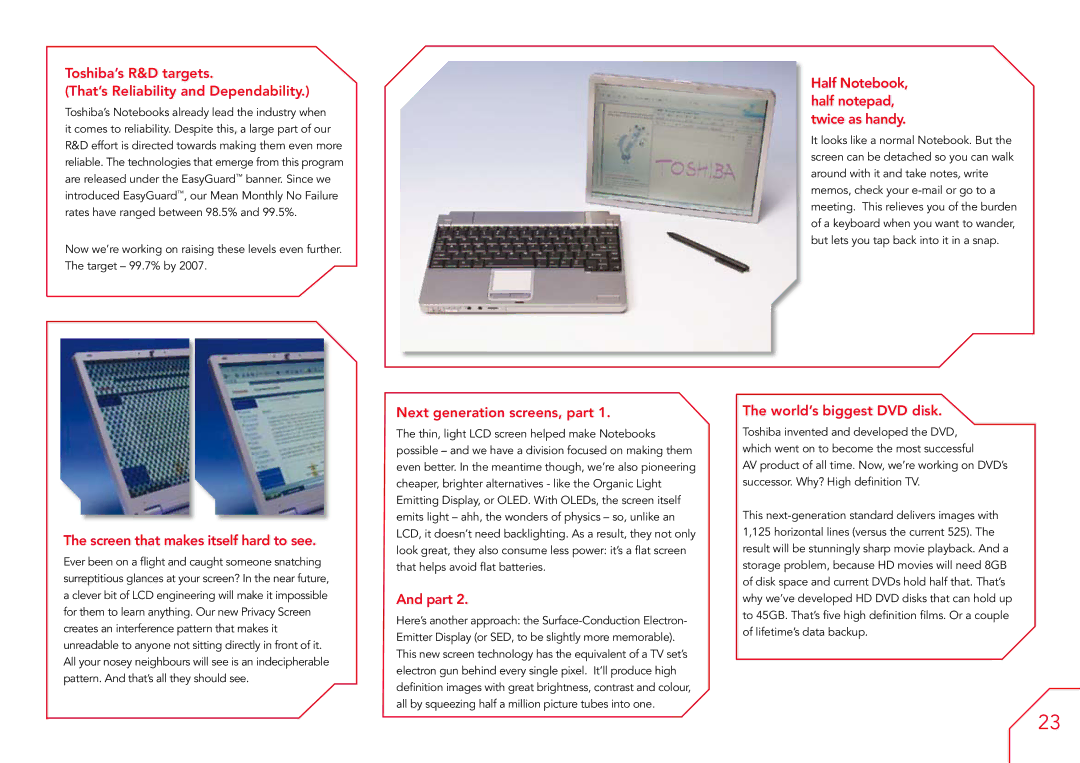
Toshiba’s R&D targets.
(That’s Reliability and Dependability.)
Toshiba’s Notebooks already lead the industry when it comes to reliability. Despite this, a large part of our R&D effort is directed towards making them even more reliable. The technologies that emerge from this program are released under the EasyGuard™ banner. Since we introduced EasyGuard™, our Mean Monthly No Failure rates have ranged between 98.5% and 99.5%.
Now we’re working on raising these levels even further. The target – 99.7% by 2007.
Half Notebook, half notepad, twice as handy.
It looks like a normal Notebook. But the screen can be detached so you can walk around with it and take notes, write memos, check your
The screen that makes itself hard to see.
Ever been on a flight and caught someone snatching surreptitious glances at your screen? In the near future, a clever bit of LCD engineering will make it impossible for them to learn anything. Our new Privacy Screen creates an interference pattern that makes it unreadable to anyone not sitting directly in front of it. All your nosey neighbours will see is an indecipherable pattern. And that’s all they should see.
Next generation screens, part 1.
The thin, light LCD screen helped make Notebooks possible – and we have a division focused on making them even better. In the meantime though, we’re also pioneering cheaper, brighter alternatives - like the Organic Light Emitting Display, or OLED. With OLEDs, the screen itself emits light – ahh, the wonders of physics – so, unlike an LCD, it doesn’t need backlighting. As a result, they not only look great, they also consume less power: it’s a flat screen that helps avoid flat batteries.
And part 2.
Here’s another approach: the
The world’s biggest DVD disk.
Toshiba invented and developed the DVD, which went on to become the most successful
AV product of all time. Now, we’re working on DVD’s successor. Why? High definition TV.
This
23
